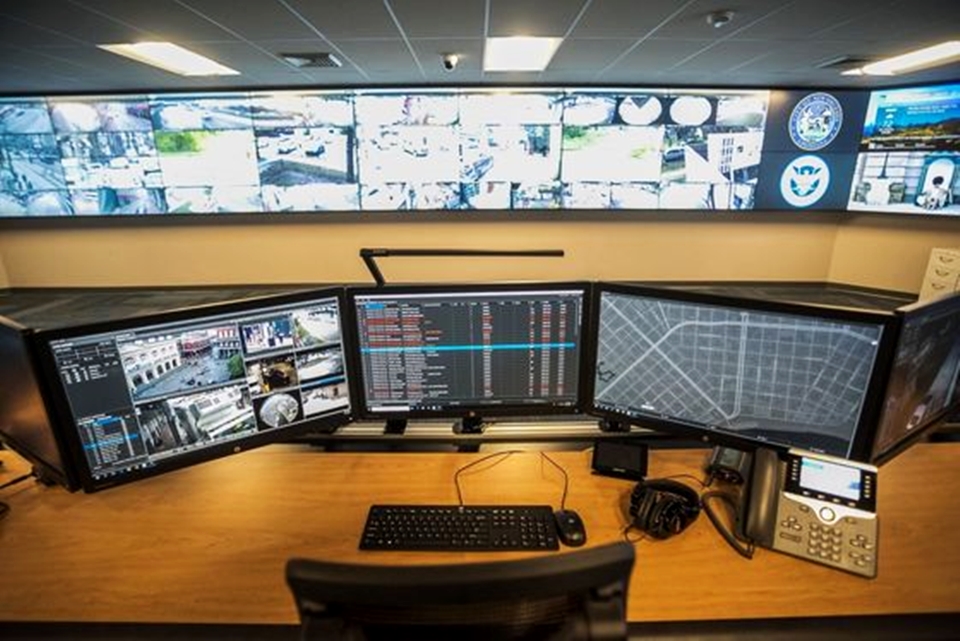Smart Cities Redefine Large Venue Integration

The combination of IoT, big data, and AI is making cities smart. According to a recent report by research firm Frost & Sullivan, the smart buildings market in North America (including smart sensors, systems, hardware, controls, and software) will be a $5.74 billion industry in 2020. And last year, BCC Research estimated that information and communications technologies for smart cities will produce a revenue of almost $327 billion in North America by 2021. So how can AV integrators and consultants get in the game?
In many cases, it already is––depending on how you define “smart cities.” Lloyd Francioni, managing partner, business development at Interstate Electronic Systems, an audiovisual design/build firm based in Harahan, LA, admits that the definition of what a smart city is can be quite broad, “but all of it ties back to the basic infrastructure of the communities in which we live,” he said. “Whether it’s transportation, emergency medical services, law enforcement, Homeland Security, 911 centers, or network operations centers providing data on sewage and water, it all has a common thread.”

IES has carved out a niche in its region for its work in command and control centers. Recently, the firm completed a project for the New Orleans Real Time Crime Center (RTCC), which currently receives over 200 feeds from cameras located throughout the city (80 in the French Quarter, and another 125 in high crime areas). For this project, IES integrated Christie Phoenix and Christie FHD553 LCD flat panels for a 2 x 19 wraparound wall in the main command center; a 2 x 2 LCD wall in a collaboration space; and a 2 x 4 flat panel wall in another room used for dealing with Homeland Security issues, with the Phoenix system supplying real-time data collection. The system also allows for the authorities to narrow searches: for example, if a robbery suspect was said to be wearing a red shirt, the camera feeds will focus in on only those in the viewing area who match that description. New Orleans plans to install an additional 125 cameras, and in some cases, private cameras positioned in residences and businesses will be linked to the RTCC.

“Command and control is really the hub of all of the technology that people relate to with smart cities,” Francioni said. “At the heart of all of these [projects] are command centers, and there are people making human decisions that can’t be automated. What they all have in common is that they want to maximize the effectiveness of the resources that they’re managing.”
Howard Nunes, CEO at PepperDash Technology Corp., an AV consulting, design, and control programming firm based in Salem, MA, recounts that his team worked on the deployment of an emergency operations center for New York City a number of years ago. Fed by 700 closed-circuit cameras positioned throughout the city, as well as feeds from local media sources, he says the facility was designed to enable emergency services, law enforcement, and city officials to better respond to crisis situations.

Not long after project completion, Nunes explains, the center was put to the test when, in 2009, Captain Chelsey “Sully” Sullenberger landed a U.S. Airways passenger jet on the Hudson River after a flock of geese flew into the plane’s engines, cutting off power. “The AV part––the smart city AV part––was all of those cameras along the river being fed to City Hall, and City Hall was able to get a view of what was going on there immediately,” he said. “They were able to make decisions very quickly because those security cameras were enabled.”
Raj Patel, principal at global design and consulting firm Arup, headquartered in London, U.K., believes that smart cities will present the AV industry with many opportunities, data structure being one of the strongest. Another area is the potential for screen technology to not only manage things like traffic, but also to continually shift environments: displays may present circulation information during rush hour, and then later on in the evening, they could transform into works of digital art. The same goes for audio technology and its contribution to soundscaping: “You’ll be able to shape the environment through audio,” he said. And, thanks to the increasing prevalence of (quiet) electric cars, traffic noise may decrease, but that also means that pedestrians can’t always hear an approaching vehicle. Once again, audio––and video––can play a role here.
A daily selection of the top stories for AV integrators, resellers and consultants. Sign up below.
As smart cities evolve, Nunes urges the AV industry to play a leading role. “I’m a huge proponent of smart buildings and smart cities being an appropriate place for AV providers to be looking for opportunity, because the sharing of data––which is core to this notion of what’s smart––is dependent on having data inputs or sensory inputs in whatever your facility is. And those inputs are frequently AV-related,” he said. And even when they’re not––take occupancy sensors, for example––they have a direct impact on AV technology. Nunes recounts that his firm frequently includes occupancy sensors in its smart room designs to enable streamlined control of meeting spaces. “That’s data at work; automation based on data in a limited environment in a conference room, but the same concepts expand. They scale very quickly to a larger community––a city.” He concedes that the objectives behind smart city projects are almost always political––which inherently shapes how data is used––“the opportunity, I think, in the AV world, is getting that information to the people who need to make those decisions.”
And, many of the opportunities that smart cities present won’t necessarily lead the AV industry into unfamiliar territory. “It’s going to be stuff they already do,” Nunes said. “How do you get in front of any opportunity? You need to be knocking on City Hall’s door, figuratively speaking, and inquiring about what their plans are, what their thinking is. And a lot of this is [done] at the early consulting level, and I think AV consultants could add a huge amount of value in defining what a smart city is.”
Carolyn Heinze has covered everything from AV/IT and business to cowboys and cowgirls ... and the horses they love. She was the Paris contributing editor for the pan-European site Running in Heels, providing news and views on fashion, culture, and the arts for her column, “France in Your Pants.” She has also contributed critiques of foreign cinema and French politics for the politico-literary site, The New Vulgate.
